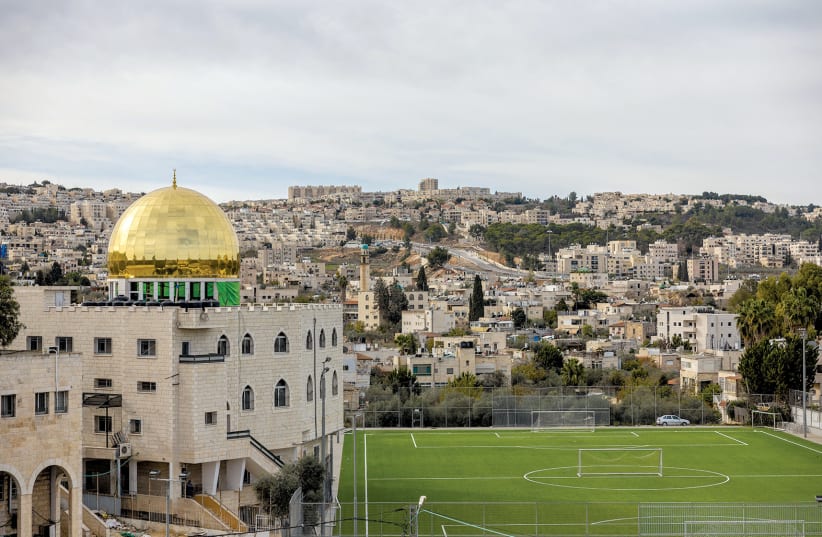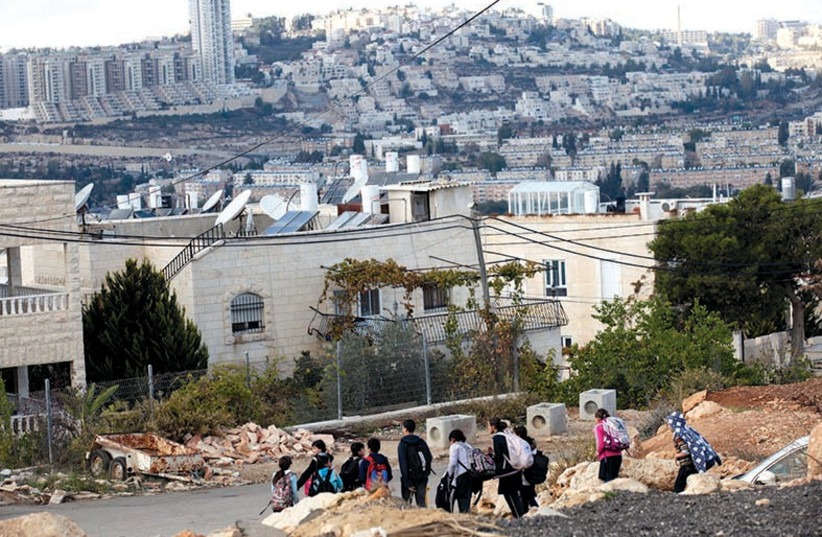
Situated at the southern end of Jerusalem lies Beit Safafa, an Arab neighborhood on the road to Bethlehem that pre-dates the foundation of the state in 1948 and has a long and rich history.
In Jerusalem takes a look at this neighborhood, an interesting area in our beautiful capital.
A little bit of history
Beit Safafa, originally a Palestinian village along the Green Line, holds a significant place in the history of Jerusalem. Some say its name means “house of the thirsty,” based on the Syriac language; others say it means “house of the summer houses or narrow benches.”
Its origins date back to the Crusader era when it was known as Bethafava or Bethsaphace, according to some sources, later transitioning through Ottoman rule in the 16th century. Several wine presses have been found in Beit Safafa, dating back to the Iron Age. Archaeologists also discovered fifty graves dating from the 1st century BCE through to the 1st century CE. Over the centuries, Beit Safafa evolved from a small village to a community of several hundred residents by the early 1900s.
At the end of the 19th century, the inhabitants of the village sold land in the north of the valley to the Templar Germans, who founded a settlement there called Refa’im (meaning “ghosts” or “giants”), later known as the German Colony, whose main thoroughfare is now Emek Refaim Street.
Later, more land in the valley was sold as the settlement spread in the new Jerusalem outside the walls of the Old City. The establishment of the Katamon neighborhood brought the border of Jerusalem closer to the village, but until the end of the British Mandate it was still cut off from the city and was not part of it. The Jaffa-Jerusalem railway passed through the territory of the village.
The tumultuous events of the 20th century profoundly shaped Beit Safafa. Following the 1948 War of Independence, the village was divided, with its southern part falling under Jordanian control, and the northern part under Israeli authority. Some say the name Beit Safafa stems from the Arabic word meaning “divided.”
After the 1967 Six Day War, the entire area came under Israeli control, leading to significant demographic shifts. Residents of the Israeli side had Israeli citizenship, while those on the south side were given Jerusalem ID cards and residency, like east Jerusalem residents, while retaining Jordanian citizenship. Palestinian Christians with Israeli citizenship from Nazareth, Jaffa, and Jerusalem moved to Beit Safafa, expanding the small community; several Jewish families moved in as well.
Despite its divisions and changing demographics, Beit Safafa remains a symbol of resilience and adaptation. The removal of barriers post-1967 facilitated integration and connectivity within the community.
Its people
Spanning an area between Talpiot, Pat, Givat Hamatos, and the Gilo neighborhood, Beit Safafa is home to various amenities catering to both Jewish and Arab populations. From schools to shops and community centers, it serves as a microcosm of peaceful cohabitation.
Despite challenges, initiatives aimed at promoting dialogue and cooperation have flourished over the years. These efforts underline Beit Safafa’s commitment to overcoming barriers and building bridges between communities. Such endeavors showcase the neighborhood’s resilience and dedication to harmonious living. Several non-governmental organizations that promote peace and coexistence operate in the neighborhood, hosting events and running programs.
In Jerusalem contacted the municipality to ask if there were any communal events this year to celebrate Eid-al-Fitr, the holiday marking the end of the month-long fast of Ramadan, which falls on Tuesday, April 9. The local municipal branch responded that due to the ongoing Israel-Hamas war and security issues, no public events would be taking place.
As of July 2022, Beit Safafa’s population stood at approximately 16,000 residents, reflecting a steady increase from previous years. With nearly 6,000 individuals up to age 18 and almost 900 over the age of 65, the neighborhood pulsates with vitality and diversity.
Beit Safafa has several schools, including a school for special-needs children. The village’s schools follow both the Israeli Bagrut matriculation curriculum and the corresponding Palestinian Tawjihi curriculum. In 1997, the Hand in Hand School for Bilingual Education was founded in the neighborhood. Supported by the Education Ministry and the Jerusalem Municipality, the school offers a bilingual curriculum in Hebrew and Arabic, with joint classes for Israelis and Palestinians.
A leisurely stroll
Any resident of south Jerusalem will probably be familiar with the Train Track Park, known in Hebrew as Park HaMesila, a verdant sanctuary nestled within the heart of western Jerusalem’s urban tapestry. Stretching gracefully over a span of seven kilometers, a rolling stretch of walking and biking trails meander through its embrace, tracing the ethereal path of yore laid down by the illustrious Jaffa–Jerusalem railway. From the venerable Jerusalem Railway Station, near the German Colony, to the confines of Teddy Stadium in Malha, this park weaves a spellbinding tale of antiquity and modernity entwined, passing picturesquely through Beit Safafa and crossing its streets as residents busy themselves with their daily lives.■
| Estimated population: | 16,000 (approximately) |
| Real estate: Average house price (buy): | NIS 2.47 million |
| Real estate: Average apartment price (rent): | NIS 5,400 |


